|
The
|
THE BURGENLAND BUNCH NEWS - No. 217 January 31, 2012, © 2012 by The Burgenland Bunch All rights reserved. Permission to copy excerpts granted if credit is provided. Editor: Thomas Steichen Our 16th Year. The Burgenland Bunch Newsletter is issued monthly online. It was founded by Gerald Berghold (who retired Summer 2008 and died in August 2008). |
Current Status Of The BB: * Members: 2025 * Surname Entries: 6837 * Query Board Entries: 4848 * Staff Members: 18 |
This newsletter concerns: 1) THE PRESIDENT'S CORNER 2) THE CHOSEN (by Della Cummings Wright) 3) LIMBACH ASSISTANCE AVAILABLE 4) THE WINES OF BURGENLAND (by Matt Boisen) 5) GENEALOGY, HOLLYWOOD STYLE 6) JEWISH ANCESTORS FROM NEUDORF BEI PARNDORF 7) WiBAG: WIRTSCHAFTSSERVICE BURGENLAND AG 8) GOCZAN FAMILY FROM URBERSDORF 9) HISTORICAL BB NEWSLETTER ARTICLES: a. GRABEN - DITCH OR VALLEY b. MEANING OF "BUNCH" - AGAIN c. APPLES - FRUIT OF THE BURGENLAND d. EARLIEST CROATIAN RECORDS? 10) ETHNIC EVENTS (courtesy of Bob Strauch & Kathy Ettl Middendorf) 11) BURGENLAND EMIGRANT OBITUARIES (courtesy of Bob Strauch) |
1) THE PRESIDENT'S CORNER (by Tom Steichen)  Concerning
this newsletter, we present "The Wines of Burgenland" by Matt Boisen
as our featured article (see Article 4). His article documents the wide variety of
Burgenland wines, throwing in a bit of history, technicalities and reminiscing. I tip my glass
to Matt as a well done and thank you! Concerning
this newsletter, we present "The Wines of Burgenland" by Matt Boisen
as our featured article (see Article 4). His article documents the wide variety of
Burgenland wines, throwing in a bit of history, technicalities and reminiscing. I tip my glass
to Matt as a well done and thank you!We lead off this edition, however, with a nearly 70-year-old essay on the motivation for genealogy and follow it with an offer of on-site genealogical assistance for those interested in the village of Limbach. Further in, we delve into WiBAG, the regional funding agency for the ESF (European Social Fund) activities in Burgenland (as mentioned in last November's article on the ESF). In addition, we provide a follow-up on a recent article and a write-up of an interaction with a BB member that concerns the difficulty in researching Jewish ancestors from Burgenland. Lastly, we present a look at how the TV drama, CSI, approaches genealogy (see Article 5). The remaining articles are our standard sections: Historical Newsletter Articles, and the Ethnic Events and Emigrant Obituaries sections. You may have noted the new mug shot above... I decided that it was time I provided one that was taken this decade (specifically mid-month Jan 2012)... even went for color (just to show there is some left in my hair!). The picture was taken in my study in front of my trusty roll-top computer desk, a place where I spend many hours each month preparing this newsletter and doing other BB-related activities. Joe Jarfas, of Equinunk, PA, passed along a short note about, as he says, "an important development in the PA 'record chase'" (and I agree). Specifically, he pointed me to website http://users.rcn.com/timarg/PaHR-Access.htm. If you go there, you will find information about a grass-roots effort to have Pennsylvania's older birth and death certificates be made available online. So far, they have succeeded in getting Pennsylvania law changed to declare that, effective February 13th, birth certificates over 105 years old and death certificates more than 50 years old are open records and will be transferred from the Division of Vital Records to the State Archives (where they will be available for public access). The ultimate goal, is to get the certificates scanned, indexed and placed online. At minimum, the group wants a searchable index placed online. They say they "need everyone (including out-of-state residents) to write, email, call or visit Governor Tom Corbett's office to keep up the pressure" and they provide all the appropriate contact information, along with sample letters. Even if you have no interest in Pennsylvania records, they point out that the presence of online records in one state makes it easier to have them made available in the next state. So, if you find value in their effort, do visit the site above and help out. On behalf of the BB organization, I have sent a letter endorsing these goals.  Stefanie
Smoliner, a sociologist at the Zentrum für Soziale Innovation (ZSI) in Vienna and project
manager of the EU project "Re-Turn" (Regions Benefiting From Return Migration), sent
me an email requesting that I post a link to the project survey (the link is included below).
It seems to be a worthwhile project so, despite likely being of little relevance for the
majority of BB members, I decided to do so (perhaps it will reach a few of the targeted
individuals). The survey materials and parent site say: Stefanie
Smoliner, a sociologist at the Zentrum für Soziale Innovation (ZSI) in Vienna and project
manager of the EU project "Re-Turn" (Regions Benefiting From Return Migration), sent
me an email requesting that I post a link to the project survey (the link is included below).
It seems to be a worthwhile project so, despite likely being of little relevance for the
majority of BB members, I decided to do so (perhaps it will reach a few of the targeted
individuals). The survey materials and parent site say:You are currently living abroad and want to return to your home country? You need support to find a job? You have been abroad and returned to your home country and want to share your experience to the benefit of others in a similar situation? Please go to http://return.ifl-leipzig.de and participate in our return migration survey! The survey targets people from Central Europe (Germany, Poland, Czech and Slovak Republic, Hungary, Austria, Slovenia and Italy) who have left their home region for more than 6 months. We need your input in order to improve the framework conditions for all people who want to return to their home region! Filling in the survey takes about 20-30 minutes. You can exit and re-start filling in the survey after each section. Please share this forward if you know someone who might fit the target profile.  Are
you aware that the Austrian Press and Information Service of the Embassy of
Austria in Washington, DC, has an English-language quarterly publication called "Austrian /
Information," which includes a wide range of Austria-related articles? It is available in
both a print and an extended internet format (click the logo above to go to its site). You can
receive the print version simply by requesting it from the website (click the "About" link
near the top of the page and follow the instructions there) or you can just read it online. Are
you aware that the Austrian Press and Information Service of the Embassy of
Austria in Washington, DC, has an English-language quarterly publication called "Austrian /
Information," which includes a wide range of Austria-related articles? It is available in
both a print and an extended internet format (click the logo above to go to its site). You can
receive the print version simply by requesting it from the website (click the "About" link
near the top of the page and follow the instructions there) or you can just read it online.I point this out, in part, because the April 1, 2009 edition included an article entitled The Burgenländische Gemeinschaft and Burgenlanders in the U.S. (click link to read it) that has a section about the Burgenland Bunch. The other reason I point it out is because of its wide range of other topics that also may be of interest to our membership. These range from dry Embassy-related doings to surprisingly whimsical essays. An example of whimsy is in the current edition: it is entitled "Paradise" and was written by the Ambassador himself, Christian Prosl. In it, the Ambassador dreams of a quiet, Saturday walk with his wife "along the canal with its thick, brownish trickle running by. We would marvel at the light-green color of the modestly expanding algae, the sun would be shining, the birds chirping, the airplane engines would be humming above us, and who knows, maybe we would even be able to spot an inquisitive little turtle which was still unaware of the imminence of winter." And, he says, "We would finally get a chance to converse freely – about love (naturally!)." However, reality breaks in... Saturday is the day he accompanies his wife on her trips... and this one is to Williams-Sonoma for its house wares sale (a "paradise for housewives," he laments). The story has a surprising, somewhat shocking ending, but I'll leave that for you to discover for yourself.  Cartoon of the month: As noted above, our feature article this month concerns The Wines of Burgenland. Given that, this ersatz computer "error" message seems oh so appropriate. I will note that my own wine glass sits beside me as I write these words, with but only a few remaining burgundy-red drops barely coloring the bottom of the bowl... should I go for more? Or just read Article 4? Better yet, I'll go for a refill and then read Matt Boisen's essay on Burgenland wines. Sounds like a win-win to me! |
2) THE CHOSEN (by Della Cummings Wright) Ed Note: BB Member Gary Gabrich passed along the following essay, found on the Appanoose County, Iowa, Genweb site (http://iagenweb.org/appanoose/index.html), Jeanette McFarland, Coordinator. Gary writes: "Friends, I ran across this opening page of a county GenWeb site in Iowa and was moved by the article "The Chosen". It brings to life the thoughts I have on my genealogy hobby but could not express as eloquently as stated by Della Cummings Wright. I bet you all feel the same."
|
3) LIMBACH ASSISTANCE AVAILABLE Karl Flieder, a professor at the University of Applied Sciences in Graz, Austria, recently sent a message to Heidi Herman, our new Members, Surnames and Villages Editor; she forwarded it to me. In his message, Karl offers help with Limbach im Burgenland research. 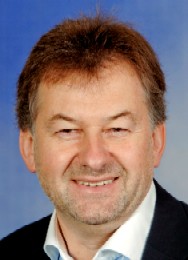 Karl
writes: Dear Ms. Herman, although I knew "Burgenland-Bunch" before, I (www.karlflieder.at)
"stumbled" over it this evening. But that's the "art & science" of the internet. Karl
writes: Dear Ms. Herman, although I knew "Burgenland-Bunch" before, I (www.karlflieder.at)
"stumbled" over it this evening. But that's the "art & science" of the internet.My name is Karl Flieder, I am from Limbach i. Burgenland and have been living in Graz for many years. However, nearly every weekend I stay in Limbach (http://www.limbach-bgld.at), where my home is. When I got the entries on your website right, some people are searching for - or are at least are interested in - this village and/or people from there. If I can help them, please let me know. By the way, my son is going to Minneapolis / Minnesota in January 2012 for study reasons. Ancestors of mine emigrated to Allentown ~ 1906 -1907, so I'd be interested in genealogy as well. Kind regards, Karl Flieder I replied: Hi Karl, Heidi Herman passed your note to me, the Burgenland Bunch President. Thank you for your kind offer of assistance to BB members interested in Limbach. My plan is to include your offer in the end of January newsletter (the December one is a reduced, year-end review version only). You did not provide names of family who emigrated to Allentown, PA, but I see Josef (son of Josef) & Maria Flieder (husband & wife, ages 25 & 20) arrived at Ellis Island on Dec 9, 1908 on the way to Allentown. This record indicates Josef had previously lived in Allentown. Also, it appears Josef first emigrated in 1903, but this is somewhat confusing as he is listed as age 17 on that record. In addition, there is a Terez Fleder, age 18, who arrived in 1900 on the way to Northampton, PA (right next to Allentown). Lastly, there was another Josef Flieder, age 42, who arrived in 1907 going to Allentown. Are any of these your people? If you are interested in becoming a BB member, you can fill out the form found on our website at http://www.the-burgenland-bunch.org/MailOpen/new-member_vq.html. There is no cost, etc., except for sharing a little family information. I see your son is going to Minnesota; I grew up there and know how cold and snowy it can be in January. He is in for a shock! Yours, Tom Steichen So, if you have interest in Limbach, drop me a note and I'll share Karl's email address with you. Until then, thanks again, Karl! |
4) THE WINES OF BURGENLAND (by Matthew Boisen) 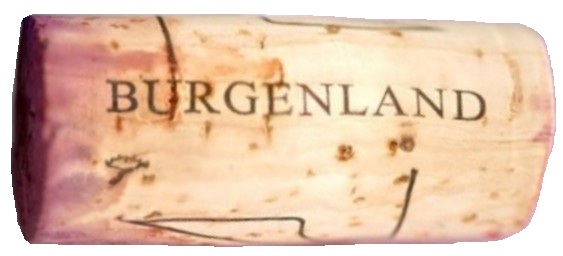
With over 13,000 hectares of vineyards (Ed note: equal to over 32,000 acres or 50
square miles), the Burgenland is Austria’s second largest wine region. The Burgenland
enjoys several attributes of good wine production, among them dry, rocky hills, the moderating
influence of the Neusiedlersee, sunny weather, and mists from the foothills of the Alps. It is
the mist that promotes the “noble rot” (botrytis) fungus that creates the sweet wines
so evocative of the area.
There are other subgroup classifications for wines from other areas of Austria as well as
definitions of blends and wines with good cellaring potential. See
http://www.austrianwine.com for details. |
5) GENEALOGY, HOLLYWOOD STYLE Last December 14th, CBS ran a new
episode (#1210) of CSI: Crime Scene Investigation entitled "Genetic Disorder" that used
genealogy to solve a crime mystery. According to the episode writer, Elizabeth Devine, "the
idea to dig into the world of genealogy came from Executive Producer Carol Mendelsohn."
Apparently both the writer, Elizabeth, and producer, Carol, are unabashed genealogy addicts,
much like many of us. |
6) JEWISH ANCESTORS FROM NEUDORF BEI PARNDORF We received an inquiry from Edward David Luft, of Washington, DC, entitled "Do you know someone who could help me find information about ancestors from Neudorf bei Parndorf, Burgenland?" It led to a lengthy exchange that touched on some of the many difficulties involved in doing Jewish genealogical research in Burgenland, especially for ancestors from the 1700s. (It was, unfortunately, made more lengthy because I was involved in a kitchen remodeling project, now complete, that caused delays in my replies and failures to share with the staff all the messages I was receiving; sorry all.) Nonetheless, I found the exchange educational about Jewish genealogical research and well worth sharing with you, the BB readership. Edward, himself, is a prolific, scholarly writer about genealogical topics (see http://www.GetCited.org/mbrx/PT/99/MBR/11078005 for a list of his many articles). What follows is an reduced, edited subset of the full exchange... Edward Luft writes: Dear Hr. Steichen, I hope that you can refer me to someone in Burgenland or nearby who might be able to help me. I have been to Eisenstadt and long ago talked in person with Mag. Johannes Reiss (Ed. Note: CEO and Director of the Österreichische Jüdische Museum in Eisenstadt). The Hauptstadtsarchiv Dresden has a large file on my ancestor, Joseph L. Friedländer, the son of Aharon Jehuda, born 1767 in Mühlendorf [or Millendorf] (then Szárazvám, Sopron County, Hungary, now Müllendorf, Burgenland, Austria); and died 1841. He was buried in Dresden next to his wife, Henriette (Jette) [or Louise ?] Rinkel or Ringel (Ringlin), from Neudorf bei Parndorf. Can you supply the name and email address of someone who might be able to help me? Thank you very much for any help that you can offer. I replied: Hi Ed, the Burgenland Bunch, as an organization, avoids recommending researchers or any other types of fee-based services, as we do not want to be held responsible in any way for the quality of the work or service provided. Nonetheless, I’m copying the BB Staff on your message; it is up to each of them as individuals whether they wish to make a recommendation. If so, I’ve asked them to contact you directly via email. I note that you do not indicate whether you are willing to pay for this research effort or are just looking for voluntary help. It would likely assist the Staff to know your answer. In addition, from what you write, I surmise that Henriette would likely be of Jewish faith. Having a clear statement on her faith might also be useful, as I suspect knowledge of Jewish records may be a more specialized skill. Edward replied: Thank you for replying so swiftly. I always do my own research so I should have made clear that I was only looking for someone to point the right way. I have been in Burgenland but was unsuccessful in my quest. I have a document from a sibling of the person for whom I search, indicating that she (the sister) was born in "Pawlow." The closest location that I find with that name is not in Burgenland and is Pawlow/Pavlov bei Pilgram/Pelhrimov (Ed note: in Czech Republic about 120 miles north-northwest of Vienna), at least with Jews present. Can you recommend anyone who can help me determine where this "Pawlow" was in the early 19th century, given that her husband was from Müllendorf? That does not guarantee that the wife was from Burgenland, but I would guess that is likely. Also, do you know anyone who could help me obtain an answer from the town authorities or the cultural group there to my email to Müllendorf, given that two such emails have gone unanswered. Our Judaic Burgenland Editor, Maureen Tighe-Brown, replied to my request to the Staff (Ed note: request not shown) about Jewish Burgenland research, both to Edward and me, saying to me: Hi Tom, Great to hear from you! First, yes, researching Burgenland Jews before c. 1833 is extremely difficult. Not only did the birth-marriage-death records not survive, as I detailed in my post to Ed Luft, but Habsburg Jews did not use inheritable surnames until nearly 1800. They used a personal name followed by the father's personal name. So you would need to know what male names were common in your family, as a start. Second, Ed has pages of published material to his credit, as I saw from the web site following his name in his post to you. He is published in Avotaynu, the JewishGen publication, and in various international Jewish genealogical materials. So he is very aware of all the Jewish sources in Central Europe. My guess is that he is simply casting a wide net, which includes Burgenland Bunch, in hopes of getting his task accomplished. Still, I sent him and you a detailed reply, as my reply might be helpful to others with Burgenland Jewish roots. Thanks for the referral! Warm wishes, Maureen And here is Maureen's detailed reply to Edward, which contains much useful information and many reference sources for Jewish-specific research in Burgenland: Hello, Ed, and Tom Steichen as well. First, Ed, I see from your internet link that you are a massively published author on genealogical issues. Congratulations on all your work! So I am guessing that you know the following, but I will write it just in case you don't: 1. Before c. 1800, Jews in the Habsburg Empire did not use inheritable surnames (except for a very few business people in Prague, and a few in the Empire with certain rabbinical or noble connections). They used a personal name followed by the father's personal name. In the 18th-century censuses (cf. 2., below), generally the householder's name is the only name listed; occasionally, the minor children at home are listed. 2. Rarely do records of birth (brit or name day), wedding, or burial survive for Burgenland Jews before c.1833, when Hungary required all religious confessions to send duplicate records to their local county (Megye). The Nazis required all original records (that is, pre-c.1833) to be sent to Berlin; to my knowledge and from information from experts in Israel and today's Austria and Hungary, these original records were all destroyed. Therefore, your most likely success is with the Censuses and with the post-1833 duplicate records of birth/brit/name day, wedding/marriage, and burial/death. 3. The most comprehensive 18th-century genealogical sources I am aware of are the seven microfilms of Censuses for the Jewish Taxpayers of Hungary. They are in Latin, for the most part, although occasionally in German or Croatian. You can purchase the microfilms at a nominal cost, probably under US$100 for the lot: http://www.mol.gov.hu/angol/bal_menusor/about_us.html 4. The next resource is the Roman Catholic Archives in Eisenstadt. The original records of many Burgenländer communities are there, not only for Roman Catholics but also for Jews, Lutherans, and others. This resource is a long shot, but worth a try: http://oesta.gv.at/site/3929/default.aspx 5. You might also contact the civil archives of Burgenland province, located in Eisenstadt. They have land contracts and some censuses. Again, a long shot: http://www.burgenland.at/landesarchiv 6. I see on a Google map that Neudorf bei Parndorf is near Gattendorf and Kittsee. Each had a good-sized Jewish community in the eighteenth century, so you might find your ancestor in their records. 7. Perhaps some materials are held in Israel at the Central Archives for the History of the Jewish People. They only have what people or governments have given them, so their holdings are not comprehensive for given villages, for the most part. In some cases, they hold a few original books of birth (brit or name day), wedding, or burial for the 19th century: http://sites.huji.ac.il/cahjp/ 8. Finally, you might check whether a village book has been published by Neudorf bei Parndorf. I have the village books for Deutschkreutz and Frauenkirchen, for instance, and each contains a few names of Jewish former residents. Generally, each village's mayor and the Roman Catholic pastor are good sources to contact: http://www.neudorfbeiparndorf.at/ Mag. Johannes Reiss remains one of your best resources, as he heads the Burgenländer Jewish Museum in Eisenstadt. You mention a marriage in Schlichtingsheim, Posen. I know absolutely nothing about Posen records. I am guessing, though, that Posen has provincial and village archives you might search. Your best bet is to scour the JewishGen web site for clues. Also, if you can locate the cemetery where Joseph's wife is buried, you might get details from the gravestone, provided that the gravestone survived the war. You might start here, with the town's English translation: http://www.szlichtyngowa.pl/index.php?lang=en. Good luck! Maureen Tighe-Brown Edward replied to Maureen: Hello Maureen, thank you so much for all of the good suggestions. As it happens, both Joseph and his wife were buried in Dresden and I have photographs that I took of both gravestones in the Old Jewish Cemetery. The local Jewish Community there was very helpful and even in English! Unfortunately, the gravestone makes no mention of birthplace for Joseph's wife. Generally, by Edict of the Emperor Joseph II, Jews were required to adopt last names from 1753 (Ed. Note: the correct year is 1782), the earliest such decree in Europe. Louis XIV is famous for saying of Joseph II, "Poor Joseph, always trying to take the second step before he takes the first." Jews did not have name days to celebrate. Joseph Friedländer had no ties to Schlichtingsheim (I have visited the town) and did not wish to return there. He did have a daughter who was living there. Largely thanks to the Communists, most records, including those of Jews in Poland are in the local branch of the State Archives. They are not relevant in this case. I wrote what at the time was probably the definitive article on Jewish genealogical research in western Poland in http://lccn.loc.gov/2003022930. Both Joseph and his wife died in Bautzen, Saxony, and are buried in the Old Jewish Cemetery, Dresden, so post-1833 census records will be of no help. I took photographs when I visited that cemetery. With respect to the seven microfilms of Censuses for the Jewish Taxpayers of Hungary, I suppose that you are referring to Acta Judaeorum: Conscriptiones Judaeorum, 1725-1775. Do you know how I would determine which microfilm would cover Muellendorf without ordering all 7 microfilms? Have you any idea if "Millendorf" was part of some larger town's Jewish congregation, or do you know of a way to determine that? I know about the following publication but have not yet seen Vol. 2, which has just been published: http://lccn.loc.gov/2010361905. See http://www.nacr.cz/english/publications_for_sale.aspx. Thank you for your help. Fritz Königshofer also replied to my request to the Staff: Tom, amongst BB staff, it would be Maureen who has the best, scholarly-level knowledge about the Jewish communities of Northern Burgenland. Maybe, Maureen has some advice for Ed. There is one thing you could check as well. This is the book on the Topography of the district of Neusiedl. Have a look at the index (for the name Rinkel/Ringl) and whether the entries for Parndorf, Neudorf, and/or Gattendorf have any material on the Jewish history of these towns. (Ed note: I did look and there was nothing other than Confessional counts, with no Jews listed in Neudorf before 1876, in Parndorf before 1857, or in Gattendorf before 1842, however the next-back survey date beyond these mentioned 3 years was 1696 or earlier. For Kittsee, Jews are first mentioned in 1735 and their synagogue was built in 1778.) Some years ago I looked at some of the Jewish records filmed by LDS. This was in pursuit of data on eminent musicians such as Joseph Joachim (Kittsee) and Carl Goldmark (Deutschkreutz), as well as in assisting other BB members. My impression was that compared to Catholic or Protestant records, the Jewish records were much more sporadic and incomplete, perhaps as a result of destructive actions in the NS times. However, Ed is looking for data from the 18th century, where, until 1781, all religions except Catholicism were suppressed. It is sometimes possible to find vital data in the Catholic records of these times with the religion stated as acath (non-catholic). Regards, Fritz At this point, I replied to Edward, noting Maureen's email response and commenting that I could not find a village called Pawlow or Pavlov near or in Burgenland in the resources I had (Hungarian Gazetteers from the 1800s, ShtetlSeeker, etc.), nor could I confirm "Millendorf" as an earlier version of "Müllendorf," and I inquired whether he could send the document(s) with these spellings so I could confirm his reading of the names. I also noted that I passed his question concerning a response from the Müllendorf authorities or cultural group to one of our Burgenland-based staff members (Klaus, specifically). Edward replied: Hello Tom, thanks for your reply and thanks for agreeing to pass on my Müllendorf query to someone who might be able to help. I did not make a copy of the record with the name "Pawlow" in it so I cannot send it to you. However, I am quite capable of reading handwritten German in Roman script [I am not as good in reading Gothic, but luckily names were written in Roman, in almost all cases in conventional German. I do not have a problem reading German in either Roman or Gothic, if printed] and am quite sure that it says "Pawlow." I found such an entry in the Statistische Zentral-Kommission, Gemeindelexikon der im Reichsrate vertretenen Königreiche und Länder [Encyclopedia of the communities of the kingdoms and territories represented in the Imperial Council], Vienna, 1903-1908, 14 vols., Library of Congress microfilm 39529 and available at Brigham Young University in full-text online, best accessed via PolishRoots, Gazetteer Series. See my article on Kendler, etc. [Ed: Kendler’s Orts- und Verkehrs-Lexikon] at Gen Dobry!, Vol. XII, No. 4, April 2011. I do not find ShtetlSeeker at all satisfactory. I prefer to rely upon Where Once We Walked, instead. It is far more complete, award-winning, and the standard used by most libraries. I live in Washington, DC, and visit the Library of Congress every week. Kendler, available online in full-text, lists a number of Pavlovs and Pawlows, none of them in Burgenland, just as you indicate from other sources. The most likely Pawlow is the one near Pilgram/Pelhrimov, but that is outside of Burgenland, of course. What piqued my interest in a possible Pawlow in Burgenland is that there is a Neudorf bei Parndorf in Burgenland, there were Jews there, and the Gemeindelexikon seems to indicate that there was a Pawlow in that area, as I remember. I shall recheck the Gemeindelexikon, when I have a chance, as it is some time since I did that research. I am certain that the spelling was Pawlow. What I am not certain about is that there was such a location in Burgenland. Names change over time. Some time ago, I verified that Millendorf is one of several prior spelling for what today is Müllendorf. Another prior spelling is Mühlendorf. German spelling was not fully standardized until the 1902 convention of German-speaking countries on the subject. There was a more recent convention allowing, for example, "sss" in German spelling in place of "ßs," the triple "s" spelling being prohibited by the 1902 convention. Since both Kendler and the Gemeindelexikon are after 1902, only the current spelling will appear in both those publications. See http://en.wikipedia.org/wiki/German_orthography_reform_of_1996. I am sure that a knowledgeable geographer or historian from Müllendorf will confirm what I say as to the prior spelling of the name, which relied upon local pronunciation at the time. Sincerely, Edward Then Klaus replied (to me): Hi Tom, The request [concerning Müllendorf] is kind of tricky. The only place I can think of to look at would be the Roman Catholic church records, which were in Großhöflein at that time. This is because the civil records (Ed wrote to the administration of Müllendorf) started only around 1895 and the Jewish population of that time lived in seven communities (http://en.wikipedia.org/wiki/Siebengemeinden) under the protection of the Esterházys. No traces of Jewish population in Müllendorf from what I have access to. The closest Jewish community was Eisenstadt. LDS holds 2 entries: a book from the Burgenländische Forschungen; and Jewish records, but only from 1833-1895. Probably there are other Jewish resources, maybe Maureen knows. I then wrote to Edward to pass along Klaus' comments, saying: So, what I take from Klaus is: 1) that the Müllendorf authorities would not have access to any records going back into the 1700s. They only started keeping records in 1895. It would be the Roman Catholic church that kept older birth/marriage/death records. 2) it would be unlikely that a Jewish person was born in Müllendorf, as Jews were seldom residents in villages other than the seven cities (with Eisenstadt being the nearest) and there is no evidence Klaus can find that says Müllendorf was an exception. Thus I suspect that the Müllendorf authorities would have thought your request may have been misguided and chose not to answer for that reason. I looked at our BB Houselists for Müllendorf and Großhöflein but did not see any property owners with names that seem likely Jewish, but our lists record only land owners a hundred years later (1860s mostly), so that is no strong argument for who lived there 100 years earlier nor for non-land-owning merchants. I also looked at the 1715 census and again found no one with names that seem likely Jewish but, again, this census records only land owners (I also checked Eisenstadt, which we know had a fair-sized Jewish community, and it also shows no names that seem likely Jewish). An added negative, is that we are looking over 50 years prior to the time you are interested in. So it appears I can be no help in finding records that may have listed Jewish residents or births… the Catholic Church in Großhöflein being the exception… but you would likely need to go to the Catholic Archives in Eisenstadt to access those records. Edward replied: Hello Tom, thanks for your in-depth reply. In the interim between my last email to you and now, I have tentatively concluded that the Pawlow in question is most likely the Pawlow near Pelhrimov/Pilgram. Unfortunately, according to Gold, Hugo, ed., Die Juden und Judengemeinden Mährens in Vergangenheit und Gegenwart, Brünn 1929, available to me at the Library of Congress, http://lccn.loc.gov/51052683, the Jewish Community in Pawlow had ceased to exist before 1929 and even the cemetery was in ruins. It seems to have been the only Pawlow which ever had a sizable Jewish community. Apparently, no vital records registers have survived. Several years ago, I ordered the book about which I wrote in "The Complete Catalogue of the Jewish Communities of Bohemia and Moravia, excluding that of Prague," Avotaynu: The International Review of Jewish Genealogy, Volume VII, Number 3, Fall 1991, pp. 20-21, just to be certain. I did not find that Jewish records of Pawlow survived. By the way, my source for "Müllendorf" in Burgenland is Joseph Friedländer's own sworn memorial to the King of Saxony. I doubt that he would lie about his birthplace in such a case, even if it was not in Saxony. Furthermore, a number of years ago, I remember discovering "Müllendorf" as a prior version of the name in modern spelling. As I have been in Eisenstadt and spoken with Johannes Reiss, I suppose that there is nothing further that can be done at this time. Thank you again for your help. Sincerely, Edward Luft After some delay, I wrote again to Edward: Hi Ed, I find these sorts of things interesting and challenging. As I have no Jewish background, I’ve never investigated the difficulties of Jewish genealogical research, even in Burgenland. As President of the Bunch, it is probably good that I’ve now learned more. My comments were not intended to question your source for Müllendorf as the birthplace; rather, it was to point out how unusual such a birth would have been in that place at that time. Like you, I would be quite inclined to trust such a sworn statement… but it certainly clashes with the known history of Müllendorf as an unlikely place for Jewish residents. How to resolve this clash is difficult. I have asked Klaus to look into the Müllendorf house lists a little further. A few Burgenland villages had lists of all residents, not just land owners… when Klaus first pulled these lists from the archives, he did not always copy all the available lists. It may be (though unlikely) that there is such an additional list for Müllendorf. If something comes from this recheck, I’ll let you know. When you spoke with Johann Reiss, did he have access to the early Großhöflein Catholic church records? If not, this remains a potential source of information. And I followed up on the above message, saying: I have heard back from Klaus on any additional house lists for Müllendorf, Großhöflein or Eisenstadt. Only Eisenstadt had additional lists (which I have now reviewed but failed to find the Friedländer name listed, though that is no surprise given the passage of ~80 years from the time you are interested in). Eisenstadt did list parcels/houses owned by Jews in the Jewish Quarter (ghetto) section, which was identified, but the lists did not identify Jews in any other manner. Some reading elsewhere indicates recording of Jewish births did not become compulsory in Hungary until the 1780s (even then, recording was often avoided because it was used for taxation and military conscription purposes); is that consistent with your understanding? If so, these facts makes it less likely that Joseph Friedländer’s birth will be found in Catholic records. You may be stymied. Given this note, I have exhausted my ideas on how to explore further. I wish you success in finding new approaches. Edward then copied me on an email he sent to Johannes Reiß at the Burgenland Jewish Museum and also sent a separate note to me: Hello Tom, thanks for your diligent efforts on my behalf. As you know I wrote to Johannes Reiß and await his reply. However, especially in light of your reply, I shall not hold out much hope. The adoption of surnames and the recording of vital statistics was required by Emperor Joseph II from 1753, I believe (Ed. Note: again, the correct year is 1782). He was the first in Europe to issue such a decree. Technically, all Jews were banished from England since 1190 so there was not need for such a decree there. That situation only changed with Oliver Cromwell, the Lord Protector. I am 100% certain that Joseph was not a landowner, nor was his father, so he will not be listed among homeowners but might be listed within a general list that includes Jewish inhabitants. You are indeed correct about the reasons why many Jews listed sons as daughters, and many were not listed at all. When the law changed in 1850, there was a rash of marriages officially recorded among Jews, especially among wealthier ones, because only legitimate children had a right to inheritance under Austrian law, and this was a way to secure such inheritances in any future court cases, along with some other benefits flowing from the state. From 1850 all clergy had to register annually with the state as well; I learned this in the archives in Kladno, when I visited there. I am not sure if Catholic clergy were covered, but all non-Catholic clergy were certainly covered, even Muslims in Bosnia, for example. Upon marriage being recognized as recorded in civil registries, the children were listed as being legitimated. Any child not so listed was not legitimated. Usually the marriage record itself listed such children. Such marriages were civil and not religious, of course. The couple had usually been married in a religious ceremony many years earlier. And remember that for both Christians and Jews in Austria, as distinguished from Hungary, civil recording of vital records was only taken from religious institutions as the official keeper of such records in 1938 or 1939. The date for Hungary, on the other hand, was 1895. Unlike in Prussia, in Austria-Hungary the culture was more relaxed when it came to issues of obedience to the rule of law; a metallic consideration could go a long way when paid to the right official. One other point: due to wars, ineptitude, etc., archival records that should be in one archive in the former Austria-Hungary are sometimes in another archive. The archivists are used to this and do research accordingly. Indeed, it was an archivist in what is now the Czech Republic who made this point to me. Finally, you are probably aware that all WW-I draft registrations for the entire Empire are in Vienna and are civil, not military, records, the registrants not yet, if ever, being in the military service. I believe that military records were disbursed to the various new countries created after WW-I. Thank you again for your efforts. Edward sent a final message: Hello Tom, you are correct. The date of the Edict of Toleration is 1782. It is clear that Maria Theresa, Joseph II's mother, had completely different ideas about the Jews. What can I say? I was in a hurry and did not check my facts. I was doing it from my head. Edward |
7) WiBAG: WIRTSCHAFTSSERVICE BURGENLAND AG 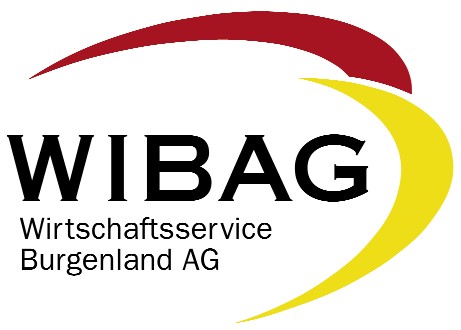 In
the November issue, I wrote about the ESF (European Social Fund) and its current activities in
Burgenland. Toward the end of that article, I mentioned some of the successful projects
undertaken in the previous ESF funding cycle. One of those successes was the establishment of
a regional funding agency called WiBAG. As the article title above indicates, WiBAG is an
acronym made from the underlined characters in Wirtschaftsservice Burgenland
AktienGesellschaft (which translates to "Burgenland Business Service Corporation").
This article expounds a bit on that agency and is largely based on the material provided on
the English version of the WiBAG website, found at
http://www.wibag.at/. In
the November issue, I wrote about the ESF (European Social Fund) and its current activities in
Burgenland. Toward the end of that article, I mentioned some of the successful projects
undertaken in the previous ESF funding cycle. One of those successes was the establishment of
a regional funding agency called WiBAG. As the article title above indicates, WiBAG is an
acronym made from the underlined characters in Wirtschaftsservice Burgenland
AktienGesellschaft (which translates to "Burgenland Business Service Corporation").
This article expounds a bit on that agency and is largely based on the material provided on
the English version of the WiBAG website, found at
http://www.wibag.at/.The overview page of the website clearly states the goal for WiBAG: Economic strength through partnership. It goes on to ask some typical business questions and then gives answers:
The website notes that WiBAG provides specific assistance in four areas:
As elsewhere, WiBAG then provides more substantive arguments for locating in Burgenland,
saying it is a province in the (new) heart of Europe with unique cultural pleasures and
various options for leisure activities, breathtakingly beautiful natural features and a
sociable people with a well-developed feel for the compatibility of work and life. It speaks
of Burgenland being a hub between east and west through a close proximity to Slovakia, Hungary
and Slovenia and talk up the fully-developed business park sites and the six technology
centers, all of which are directly connected to the Burgenland data highway via an optical
fiber network. And it offer service in finding the right location, obtaining permits and
applying for grants. |
8) GOCZAN FAMILY FROM URBERSDORF Recent new member Nancy Coughlin, of Sterling, VA, wrote a 'thank you' in reply to Newsletter 215 (in which we wrote of her connection to staff member Fritz Königshofer). That reply started a relatively long exchange in which we determined the correct village name for her Goczan family, found a few Ellis Island emigrant entries and yet again stumbled across the potato field! Shown below is part of the exchange, eliminating text unnecessary for the main story lines. Nancy said: Enjoyed the newsletter and especially the entry about my contact with Fritz Königshofer. We exchanged several e-mails. It was really nice to hear of this connection with my uncle Bela. I hope more connections might come. By the way, I always knew my mother's potato salad as grumpen or krumpen salad. Nice memory. Nancy This prompted a reply and a PS from me: Hi Nancy, Fritz' memory was special, I'm sure. Interesting about the potato word... Richard Potetz suggests that the change to Krumpen takes place as you move south of Güssing... St. Michael is north. I suspect there was a strong Croat settlement in/around St. Michael given your mother's use of the word (in fact, Frank Paukowits' article ( http://www.the-burgenland-bunch.org/Newsletter/Newsletter206.htm#06) shows this to be true (Richard may wish to revise his wording a little! In fact, I'll share this note with him to hear his comments... Hi Richard!). Thanks for writing, Tom A PS: I forgot to ask you about Ubersdorf... you listed it for your Goczan family. We have no Ubersdorf in Burgenland. Did you perhaps mean Oberdorf (which is not far from Oberwart)? Nancy replied: Hello again, I was never quite sure what the relatives were calling the town that the Goczans were from. I presume from your comment that it must be Oberdorf but think they put a "s" in there making it sound like Obersdorf maybe. Anyway all my mother's mother's brothers (of whom I knew Steven, John and Lester) lived there until immigrating to the US. I always assumed it was close to St. Michael and I think I went there with my cousin Ulrike Zarka Riedl when I was in Austria 2 years ago and it was very close by. Could they have been referring to a lower part of town? My mother used to spend time there, too, living with her grandmother during the summers, I think. Again, way more info than you want but Goczan pops up so rarely that any info about them I find interesting. Thanks for all the family info you have provided me and I am glad you included my contact with Fritz in the Newsletter... maybe someone might be inspired to share more background. Nancy 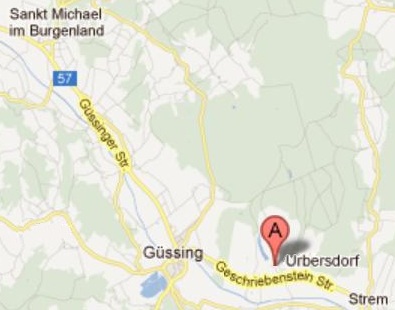 And
I followed up: Hi Nancy, I now think, from your description of nearness to St.
Michael, that you are referring to Urbersdorf, which is a mile and a half east of Güssing and
about 5 miles south-southeast from St. Michael. I was led to Oberdorf because you also listed
Oberwart for the Goczans (and Oberdorf is about 2 miles from Oberwart while Urbersdorf is
25-30 miles from Oberwart). And
I followed up: Hi Nancy, I now think, from your description of nearness to St.
Michael, that you are referring to Urbersdorf, which is a mile and a half east of Güssing and
about 5 miles south-southeast from St. Michael. I was led to Oberdorf because you also listed
Oberwart for the Goczans (and Oberdorf is about 2 miles from Oberwart while Urbersdorf is
25-30 miles from Oberwart).Looking on the Ellis Island site, I see that a Ladislaus Goczan, age 25, emigrated from Orbanfalu, Hungary (now Urbersdorf, Austria) to NYC in 1911. He joined brother Rudolf and lists mother Teresia as nearest relative in Orbanfalu. Rudolf Gaczan (sp), age 23, is listed as emigrating to NYC from Urbersdorf in 1909 to join sister Roza (is this Rosina Zarka?). He lists mother Therese Goczan in Urbersdorf. Also, a Johann Goczan, age 28, from Urbersdorf to Kreisserville, NY in 1922, joining brother Louis Goczan (Ladislaus?) and listing mother Theresia as nearest relative in Urbersdorf. Also, a Adalbert Goczan, age 35, from Urbersdorf to Kreiserville, NY in 1922, joining brother L. Goczan and listing mother T. Goczan as nearest relative in Urbersdorf # 4. Are these your people? If so, this confirms Urbersdorf. The ship manifests can be seen for free at the Ellis site. There is also information available online concerning census, naturalization and SSDI records for these people. 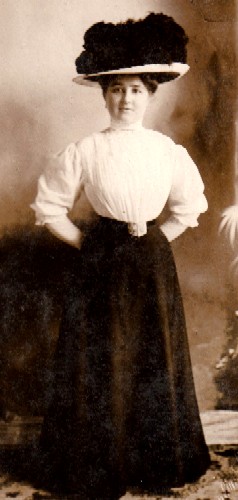 And
Nancy replied: Wow, you are good. I have seen ship's manifests about my father and his
brother's coming from Germany but not from my mother's family. Yes, all these people you
mention are my relatives. My great grandmother was Theresa Goczan from Urbersdorf (thanks for
getting to the bottom of this). I knew Ladislaus, better known by me as Uncle Lutzi (Lester),
who lived forever on Staten Island (took the ferry to visit when I was very young and I
thought we went to Austria). I did not know my uncle Rudi but had heard my mother speak of
him. When he came to join his "sister Rosa" that would be my grandmother Rosina, better known
as Rosa or Omama to me. She had come to the US in 1909 and had worked as a model for a NYC
department store. I have a lovely picture of her posing in 1900's attire (Ed: see
right). She returned to Austria to marry my grandfather, Ludwig (Alois as I recently
learned) Zarka who was from Oberwart prior to having his restaurant in St. Michael and raising
his family (my mother and her siblings). I also knew Johann, my uncle John. He and my Uncle
Steve (not mentioned but older than John and younger than Lester and Rudi) lived forever in
NYC. Both were drivers for Ludwig Bauman Furniture and later for United Parcel. Neither
married although Lester did and I think I still might have a cousin Lester living on Staten
Island. And
Nancy replied: Wow, you are good. I have seen ship's manifests about my father and his
brother's coming from Germany but not from my mother's family. Yes, all these people you
mention are my relatives. My great grandmother was Theresa Goczan from Urbersdorf (thanks for
getting to the bottom of this). I knew Ladislaus, better known by me as Uncle Lutzi (Lester),
who lived forever on Staten Island (took the ferry to visit when I was very young and I
thought we went to Austria). I did not know my uncle Rudi but had heard my mother speak of
him. When he came to join his "sister Rosa" that would be my grandmother Rosina, better known
as Rosa or Omama to me. She had come to the US in 1909 and had worked as a model for a NYC
department store. I have a lovely picture of her posing in 1900's attire (Ed: see
right). She returned to Austria to marry my grandfather, Ludwig (Alois as I recently
learned) Zarka who was from Oberwart prior to having his restaurant in St. Michael and raising
his family (my mother and her siblings). I also knew Johann, my uncle John. He and my Uncle
Steve (not mentioned but older than John and younger than Lester and Rudi) lived forever in
NYC. Both were drivers for Ludwig Bauman Furniture and later for United Parcel. Neither
married although Lester did and I think I still might have a cousin Lester living on Staten
Island. So that ends the mystery of Urbersdorf. I thought it was the little town I saw 2 years ago and even tried to figure out which house was the Goczan one. Thank you so much for your digging. It's been fun to read all about my ancestors and I will faithfully write all this down for my sister and our daughters so the family history does not get lost, although young people these days don't seem too interested... maybe when they get old. Thanks again. Nancy I replied: Excellent, Nancy, There was, in the late 1800's, quite a collection of Goczans in the Sarvar and Kald area of Hungary (about 20 miles east of the current Burgenland border and in old Vas County, as were St. Michael and Urbersdorf). It may well be that your people came from there. Do you know the first name of Theresia's husband or her maiden name? As I mentioned in my last message, house #4 seems to be the right one in Urbersdorf. Put "Urbersdorf 4, Güssing, Austria" in Google Maps and you can see a current satellite image of the place! Glad I could be of help. Tom PS: I'll have your BB entries corrected to read Urbersdorf. And Nancy followed up: Thanks again and I will Google map the house. How cool is that? I will look at old papers and see if I can find my great grandmother's maiden name and something about "the Goczan" as he was referred to. I know there was a strong Hungarian connection. Many relatives spoke Hungarian. Again thanks and I appreciate you interest and efforts on my behalf. Nancy Later, Nancy followed up again: Hi again. I just remembered that I posted this message a few months ago to a BB member mentioning the Fischl name. Forgot all about it so I copied it here for your amusement: "This is info I have about the Fischl in my family, My mother's (Gisela Zarka) mother was Rosina Goczan. Her parents were Ladislaus Goczan married to Theresia Fischl. Her parents were Johann Fischl and Maria Linki (the old German script makes many letters hard to read). Johann's parents were Johann B...Fischl and Elizabeth Hutenfelder. Maria's parents were Josef Linki (sp) and Theresia Krenn (sp). I can go back a little farther but don't think it will help you. These records were complied my uncle Aladar Zarka during the Nazi occupation of Burgenland in order to prove that he and his family were not Jewish. So explained my uncle Ali's daughter." That ends the Goczan-related exchange... but there were those passing comments about Krumpen in the first messages above... Richard Potetz writes: You caught me, Tom. I did assume "Krumpen" was just used south of Güssing. Worse yet, my data set was just my mom and three BB Newsletter readers with ancestors who lived south of Jennersdorf. (Two of those three recalled the word "Krumpen.") On the other hand, your data set (one person with ancestors who lived north of Güssing) wouldn't satisfy a mathematician either. :-) Nancy, your connection with Fritz was great to read about. That's a wonderful example of how the BB helps people learn about their Burgenland roots. By the way Fritz has helped many BB members with message board questions, so I'm especially glad he was able to find you. Please don't be put off by Tom and me having fun wrangling over our opinions/guesses. I hope others who, like you, remember the word Krumpen, come forward so we really do learn where that word was used. Best wishes, Richard And I replied: LOL, Richard, I’m a statistician by training… and know we’ve “proved” nothing… but I think the connection to Croat settlements is likely the key. Our efforts here remind me of a “statistics” research story my ex-boss loved to tell. He said there was a researcher he worked with who used chickens to test something. But the researcher was having a hard time interpreting his results: "...one chicken tested positive, one negative, and the third escaped… could statistics help?" he inquired. |
9) HISTORICAL BB NEWSLETTER ARTICLES Editor: This is part of our occasional series designed to recycle interesting articles from the BB Newsletters of 10 years ago. In this edition, I've taken four short articles from the December 2001 Edition, two being short word definitions, one being an "apple" complement to Matt Boisen's featured wine article above, and the last being a note about some early Croatian records. Enjoy! THE BURGENLAND BUNCH NEWS No. 102 December 30, 2001 GRABEN - DITCH OR VALLEY Some German geographic terms can be confusing. One that has given me trouble is "Graben." The following clarifies the definition. I [Gerry Berghold] wrote to Albert Schuch: Albert, please tell me about the use of the word "Graben." The dictionary says ditch, canal or drain, but those terms don't seem to always fit Burgenland map usage. We also have village names with "graben" added: Rehgraben, Sagergraben, Katzelgraben, Schmalzgraben. Names are from Wandern im Südburgenland, S&F (Schubert & Franzke, a Radfahren Guide, 1:50, 000 scale). We have drainage ditches here in the US, but we do not name them unless they are navigable canals. I know that the southern Burgenland was once quite swampy and that there were drainage projects. Does "graben" in this area generally mean "drainage ditch"? Albert replies: Of course your dictionary is right, as ditch, canal and drain are all correct translations of the German word "Graben." However, when used as a geographical term (like in village names), "Graben" has the meaning of "small valley." You may remember the small valley outside Stegersbach, where my mother was born and her sister still lives. (You stopped there after lunch at Dr. Dujmovits' house.) This is a typical "Graben," and it is (or rather was) referred to in that way by the locals: They used to call it "Nirscherl-Graben," whereby the first part of this name is derived from the adjacent hill, the "Kanischaberg." MEANING OF "BUNCH" - AGAIN In a message dated 11/29/01, Nicole writes: Hi Gerry, What is the significance of the name "Burgenland Bunch"? Is the word bunch in place of the word clan, or does it have more significance? Is Bunch a name that is native to this region? Reply: "Bunch" by Webster, is a loose group of the same items, like a "bunch of flowers" or a "wild bunch of people." There is a movie entitled "The Wild Bunch" as an example. Therefore, BB implies a homogeneous grouping - in this case, descendants of Burgenland immigrants, loosely connected by a few lists and a newsletter. Similar German words are "Bundel", "Bund", "Gemeinschaft", etc. Clan would denote a much closer relationship. There already exists a Burgenländische Gemeinschaft and Burgenland Bund, which, at least to Americans, would have a political significance. Americans wouldn't understand "Bundel" and "group" has much commercial usage, so we are left with bunch. I might mention that "bunch" causes Europeans all sorts of definition problems. Ergo, I accomplished my desire - a name that is unique and eye catching. Regards, Gerry Berghold, Editor BB News, founder Burgenland Bunch. APPLES - FRUIT OF THE BURGENLAND Burgenland is noted for its fruit production. Apples, apricots, grapes, pears, plums, cherries, all are shipped fresh to urban areas, canned, or turned into jelly, wine, juice or schnapps. Much of the fruit in Vienna's markets is from the Burgenland. My grandmother always said that Burgenland fruit was larger than American fruit and we didn't believe her until we visited Burgenland. After grapes, apples are next in quantity of fruit grown. We were sitting in the kitchen nook of the Gerger family in Güssing when Herr Gerger brought out a bottle of his own "apfelsaft" (apple juice). I thought he was tricking us with some "apfel schnapps", but he assured us it was harmless homemade apple juice, and so it was, and very good. Fruit juice is often served concentrated, diluted with mineral water, and we also had some that way at the Schuchs in Kleinpetersdorf. Cider is pressed as well as "Perry" (a pear cider), and apfel schnapps is distilled, but much of the apple harvest is pressed for non-alcoholic juice or "Most". It is a good drink to order in place of wine. It does not have the commercial taste of American apple juice. We found the apples tasty eating. The Gergers have an orchard in the Ortsteile of Rosenberg and Herr Gerger goes there to tend his orchard. It is an idyllic rural spot, just west of Burg Güssing, which you can see to the east. Deer are a problem and he counters this by feeding them culls, hoping they will leave his trees alone. Wind storms are also a problem and he had some large branches down when we visited Rosenberg to view my grandfather's old home. The Gerger family is native to Rosenberg and married with my Pöltl line, thus we are cousins. The Schuchs of Kleinpetersdorf, like many village dwellers, also have a small apple orchard in the rear of their property. Apple wood makes a great fire. A very nice book in German is "Rund Um Den Apfelbaum" (Around The Apple Tree) by Gerger/Holler, Doncsecs Druck in Pinkafeld, publishers. It describes apple culture in southern Burgenland and identifies the many varieties grown. I'm interested since we live in the northern Shenandoah Valley of Virginia, noted for apple production. We have an annual apple festival and we live within smelling distance of the Whitehouse Apple Factory. When they make applesauce or apple butter, the air is like wine! Late in the season when they make vinegar, it's otherwise! On page 82 of the above book is a picture of the farm of Heidi Gerger's parents, near Neustift. Heidi is cousin Klaus' wife and we were able to visit this farm. There are 2900 fruit trees in this area and we saw an old fruit press and farm implements. Apple trees originated somewhere near the Caucasus (Garden of Eden?) about 5000 BC and were brought to the Burgenland region by various colonizing groups. The Romans cultivated fruit trees here as well as German settlers following the forays of Charlemagne. Medieval monastery records mention orchards. In 1895 there were 5456 apple trees in the Güssing area with many more at other villages. Apfelstrudel probably originated from Turkish pastries following the Turkish Wars, apples replacing nuts, raisins and honey. It resembles Greek Baklava and other near eastern phyllo dough pastry. It is interesting to note that Turkish sources referred to Vienna as the "golden apple" and Constantinople as the "red apple" - Turkish myth speaks of "the warrior of the faith who will pluck the red apple." Unlike the United States, where Red and Yellow Delicious, Rome, Granny Smith, Winesap and other modern hybrids predominate, Burgenland apples tend to be older varieties. Chief among them are the Kronprinz Rudolf (18%), Ilzer Rosenapfel (10%), Jonathan (12%), Rheinischer Bohnapfel (8%) and the Steirischer Maschanzker (8%). After these come a bewildering variety which includes the Roter Delicious (2%) and the McIntosh and Winesap. The Burgenland apples are not always as perfect as our American apples, grown for the supermarkets, but I think they have more flavor. Where would we be without Apfelstrudel, Apfelflecken, apple dumplings, pie, cake, baked apples, applesauce, apple butter and an apple a day, not to mention juice, cider, brandy, vinegar and even Pennsylvania dried apples (apple schnitz)? In order to reduce the size of my waist, my wife bakes an almost sugarless apple crisp. I'll have a large piece of apfelstrudel please! ADDENDUM I happened to mention to Inge Schuch that I was writing an article concerning apples and she replied with the following: I wonder what you will be writing, about apples/fruit of the Burgenland, in your next newsletter. What a sweet idea. Apples from our orchard in Kleinpetersdorf and from my aunt's in Stegersbach have always been special to me. Because the trees that our grandparents and great-grandparents planted grow the kind of apples that you cannot buy in the supermarkets. "Grofnstoana" for instance, as my mother calls them - I would not even know how to spell the word properly in standard German - are one of my favorite apples; so wonderfully acidic and aromatic. "Jonathan," too. But things have started to change. Take "Kronprinz" - I think it is a safe bet to say that you could not get those in a supermarket when I first moved to Vienna 16 years ago; and now they have become fairly commonplace and popular. Does the book you bought mention http://www.arche-noah.at/? That is an Austrian association with the ambition of preventing old species of fruits and vegetables in danger of dying out from disappearing, and of promoting the distribution of old varieties. EARLIEST CROATIAN RECORDS? One tax that the Ottoman Turks levied on subject peoples was what is referred to as the "Boy Tribute System." Every three years, Turkish tax collectors would visit non-Turkish villages that they had subjected and select the finest male children for shipment to Constantinople and training as imperial soldiers and servants. This system was introduced by Sultan Murad II in 1432 AD in Greece and the Balkans and abolished in 1638. In order to insure that all boys were considered, village priests and elders were required to keep parish rolls of names and birth. It is possible that such records still exist, although I have never heard of them before reading the following book. These records would predate the church records (originated by the Council of Trent 1545-63) by at least 100 years, although few of the boys selected would have subsequently married and had descendants. The "Boy Tribute System" did not apply to Hungary proper but it did apply to Croatia. Source: "Lords of the Horizon" by Jason Goodwin, Henry Holt Publisher, New York, 1999, pps. 56-60. |
10) ETHNIC EVENTS LEHIGH VALLEY, PA (courtesy of Bob Strauch) Saturday, Feb 4, 6-10 pm: - Fasching #1. Reading Liederkranz. Music by the Josef Kroboth Orchestra. Info: www.readingliederkranz.com. Saturday, Feb 11, 6-10 pm: - Fasching #2. Reading Liederkranz. Music by the Joe Weber Orchestra. Info: www.readingliederkranz.com. Saturday, Feb 11: - Valentines Dance. Coplay Sängerbund. Music by the Johnny Dee Orchestra. Members and their guests welcome. Guests must be accompanied by a member. Sunday, Feb 12, 1-4 pm: - Fasching Brunch. Lehigh Sängerbund, held at the Knights of Columbus in Allentown. Button accordion music by Bob Strauch. Info: www.lehighsaengerbund.org. Friday, Feb 24, 6-10 pm: - Fasching at the Evergreen Heimatbund in Fleetwood. Music by the Joe Kroboth Orchestra. Info: www.evergreenclub.org. LANCASTER, PA First Tuesdays, Feb 7, 5:30-7:30 pm: All you can eat Buffet. Entertainment by Carl Heidlauf on Piano. ~ Open to the Public ~ $10 ($12 guests). Lancaster Liederkranz, 722 S. Chiques Rd, Manheim, PA. lancasterliederkranz@verizon.net, 717-898-8451. Saturday, Feb. 4, 7:30-11:30 pm: Fasching Dance. Lancaster Liederkranz. $8 ($10 guests). Music by the Continentals. Dinner service available 5:30 to 8 pm. Sunday, Feb 5: Super Bowl XLVI. Lancaster Liederkranz. Members N/C ($5 guests). Bring a covered dish to share! Saturday, Feb 18, 7:30-11:30 pm: Lumpen Ball. Lancaster Liederkranz. $8 ($10 guests). Music by the Joe Weber Band. Dinner service available 5:30 to 8 pm. NEW BRITAIN, CT Friday, Feb 3, 7 pm: Heimat Abend. $3. Austrian Donau Club, 545 Arch Street, New Britain, CT, (860) 223-9401. Music by Joe Rogers and his band. Kitchen special: Steffi's Goulash. Sunday, Feb 5: Superbowl Party. Austrian Donau Club. No details available. Sunday, Feb 12, 8 am-Noon: Sonntag Frühstuck. Austrian Donau Club. Come enjoy breakfast. Sunday, Feb 12, 1-6 pm: Chili Contest and Potluck Supper. Austrian Donau Club. See Poster here. Friday, Feb 17, 7:30 pm: Heurigan Abend. $3. Austrian Donau Club. Music by Schachtelgebirger Musikanten. Hot food is available from the kitchen. Tuesdays at 7 pm: Men's and Women's Singing Societies meet. Austrian Donau Club. Thursdays at 7 pm: Alpenland Tänzer (Alpine Country Dancers) meet. Austrian Donau Club. UPPER MIDWEST (courtesy of Kathy Ettl Middendorf) Sunday, Feb 5, 1-5 pm:
Upper Midwest BB meeting. At the German American Institute, 301 Summit Ave, St. Paul,
MN. Topics for discussion will be 1) the 1715 census of West Hungary and 2) the recent
addition of Hungarian Catholic Baptism records on FamilySearch.com. |
11) BURGENLAND EMIGRANT OBITUARIES (courtesy of Bob Strauch) Frieda Neubauer  Frieda
Neubauer, of North Catasauqua, PA, passed away on December 6 at the age of 91. Frieda
Neubauer, of North Catasauqua, PA, passed away on December 6 at the age of 91.She was born in Rábafüzes/Raabfidisch, Hungary to the late Anton and Theresia (Jost) Zwetolitsch and was married to the late Edward Neubauer. Frieda had worked at Sacred Heart Hospital in janitorial services, until retiring in 1985. She had been a member of Sacred Heart of Jesus Catholic Church and a member of the Austrian-Hungarian Veterans Society, both in Allentown. Survivors: Daughter Hilda and husband William Fonzone of Whitehall; two grandchildren, Bill and wife Kerrie Ann Fonzone and Dina Fonzone; three great-grandchildren, Isabella, Olivia, and Rocco. Services: A visitation will be held from 10 to 11 a.m. on Friday December 9 to be followed by a service at 11 a.m. both at Weber Funeral Home, 502 Ridge Ave., Allentown. www.weberfuneralhomes.com. Contributions: In lieu of flowers, please give to the National Multiple Sclerosis Society, Greater Delaware Valley Chapter, 30 South 17th Street Suite 800, Philadelphia, PA 19103. Published in Morning Call on December 7, 2011 Marie Ann Cole  Mrs.
Marie Ann Artinger Cole, 89, of Frederick, went to be with her Lord and Savior on Saturday,
December 10, 2011, at the Frederick Memorial Hospital. Mrs.
Marie Ann Artinger Cole, 89, of Frederick, went to be with her Lord and Savior on Saturday,
December 10, 2011, at the Frederick Memorial Hospital.She was the loving wife of William R. "Robby" Cole, Sr. They were married in November of 1947 and had just celebrated 64 years together. Marie was born on November 27, 1922 in Kemeten, Burgenland, Austria, and was a daughter of the late Karl and Elizabeth (Schuller) Artinger. At the age of seven she arrived at Ellis Island to join her family living in Pittsburgh, Pennsylvania. She was a homemaker for most of her life and her greatest calling in life was caring for her family. She loved celebrating birthdays, picnics, family gatherings, and she and her husband enjoyed traveling. At one time she was an avid bowler. Her kindness and dedication to family, friends and strangers was a testament to whom she was. She made the world a better place and will be greatly missed by all. Surviving in addition to her husband are four children, Bill Cole and wife Patty, Diane Cole, Paul Cole and David Cole and wife Gwyn, 10 grandchildren, Jared Cole and wife Megan, Todd Cole, Paul Cole, Jr., Bradley Cole, Justin Cole, Maria Cole, Benjamin Cole, Jessica Cole, Sarah Cole and Matthew Cole, and one great-granddaughter, Emily, one sister, Betty Langman and one brother, Walter Artinger and wife Elaine. In addition to her parents she was also preceded in death by a son, Ronald Cole and a sister, Margie Wilson. The family will receive friends from 5 to 8 p.m., on Wednesday, December 14, 2011, at the Keeney and Basford Funeral Home, 106 East Church Street, Frederick. Funeral services will be held at 11 a.m., on Thursday, December 15, 2011, in the Etchison Memorial Chapel of the funeral home. Rev. John L. Manley, will officiate. Interment will be in the Mount Olivet Cemetery, Frederick. In lieu of flowers memorial contributions may be made in her memory to a charity of ones choice. Online condolences may be shared at www.keeneybasford.com. Edward Klepeis  Edward
Klepeis, 89, a resident of the Culinarian's Home and former long time resident of Maple Hill,
Rosendale, New York, died Monday Dec. 12, 2011 at the Kingston Hospital. Edward
Klepeis, 89, a resident of the Culinarian's Home and former long time resident of Maple Hill,
Rosendale, New York, died Monday Dec. 12, 2011 at the Kingston Hospital. He was born in Glasing, Burgenland, Austria on July 17, 1922, a son of the late Edward and Rose (Stranzl) Klepeis. Mr. Klepeis was a 57 year member of Local 17 Laborers Union in Newburgh where he was a foreman until his retirement in 1986. He loved the outdoors and the Catskill Mountains. Growing up he worked on the family dairy farm in the LeFever Falls area of Rosendale. His wife, Hilda (Kerbacher) Klepeis died in 1997. He is survived by two daughters, Marianne Mangan of Maple Hill, Kathryn Layton of El Sobrane, Calif., three sons, Martin of Breman, Maine, Steven of New Orleans, La., and Edward Klepeis of Wallkill, a sister, Dorothy Miller formerly of Kingston, now residing at the Culinarian's Home in New Paltz, Also survived by eight grandchildren, eight great-grandchildren and many nieces and nephews. Two brothers, Walter and Frank Klepeis died previously. The funeral will be held 10:30 a.m. Saturday from the George J. Moylan Funeral Home Inc., 2053 Route 32, Rosendale. A Mass of Christian Burial will be offered 11 a.m. at St. Peters Church, Rosendale. Rev. Andrew Florez will officiate. Cremation will be at Wiltwyck Cemetery and final inurnment will be in St. Peters Cemetery, Rosendale. Friends may call at the funeral home on Friday 4 to 7 p.m. In lieu of flowers, memorial donations are requested to the Culinarian's Home, 71 Old Tshirkey Road, New Paltz, N.Y. 12561. www.GJMoylanfuneralhome.com. Published in The Daily Freeman on December 14, 2011 Pauline Billisitz  Pauline
Billisitz, née Miholich, 97, of South Bend, Indiana, passed away Thursday, December 15, 2011. Pauline
Billisitz, née Miholich, 97, of South Bend, Indiana, passed away Thursday, December 15, 2011.She was born in Grosswarasdorf, Austria, and was married to the late Stephen Billisitz. Surviving are daughters Elsie Billisitz & Nancy (Robert) Cretsinger, son Steve (Lorraine) Billisitz, 7 grandchildren, 11 great-grandchildren and 2 great-great-grandchildren. A Mass of Christian Burial will be celebrated at 12 pm Monday in Our Lady of Hungary Church. Burial will follow in Fairview Cemetery. Family and friends may call from 10:45-11:45 am Monday in the Zahoran Funeral Home. Memorial contributions may go to Our Lady of Hungary Church. Published in South Bend Tribune on December 17, 2011 Hilda Dreisbach  Hilda
Dreisbach, 83, of Northampton, PA, died Saturday, December 17 in Whitehall Manor. Hilda
Dreisbach, 83, of Northampton, PA, died Saturday, December 17 in Whitehall Manor.She was the wife of the late Herman A. Dreisbach, who died April 15, 2011. Born November 3, 1928 in Kroatisch-Ehrensdorf, Austria, she was the daughter of the late Frank and Rose (Palkovits) Csencsits. Hilda worked in housekeeping at Sacred Heart Hospital in Allentown for 10 years. She previously worked in the Garment Industry and was a homemaker. Hilda was a member of Queenship of Mary Church and the Altar & Rosary Society. She was a member of the Catholic War Veterans Post # 454, Ladies Auxiliary. Hilda was a volunteer for many community organizations including the church and school cafeteria. Survivors: daughters, Susan Dreisbach, of Northampton, Stephanie Wisdo, of Philadelphia, sons, Daniel and wife Joanne, of Mifflinville, David and wife Kim, of Northampton, Michael and wife Norene, of Forest Inn and Matthew and wife Darlene, of Dumont, New Jersey, six grandchildren, Andrew, Keri-Ann, Kelli-Ann, Nicole, Matthew and Brenda. Hilda was predeceased by a brother, Frank L. Csencsits. Services: A Funeral Mass will be celebrated on Wednesday, December 21, at 10:30 a.m. in the Queenship of Mary Church, 1324 Newport Ave., Northampton. Family and friends may call Tuesday, 6 to 8 p.m. and Wednesday, 9:15 to 9:45 a.m. in the Reichel Funeral Home, 326 E. 21st St., Northampton. Burial will follow in the Our Lady of Hungary Parish Cemetery. Contributions: may be presented to the church c/o funeral home. Published in Morning Call on December 18, 2011 Simon Rajkovac  Simon
Rajkovac, 84, of Northampton, PA, died Tuesday, January 3, 2012, at Jefferson University
Hospital in Philadelphia. Simon
Rajkovac, 84, of Northampton, PA, died Tuesday, January 3, 2012, at Jefferson University
Hospital in Philadelphia.Simon was the husband of Mary R. (Kiss) Rajkovac. They celebrated their 41st year of marriage this past December 26, 2011. Born in Horvátlövö (Kroatisch Schützen/Hrvatske Šice), Vas megye, Hungary, he was the son of the late Simon and Etelka (Cseri) Rajkovac. Simon was employed by the Northampton Area School District in Maintenance and Custodial services for over 20 years before retiring in June of 1992. He was a member of Queenship of Mary Catholic Church, Northampton, PA. Survivors: Surviving along with his wife Mary are a daughter, Suzann M. wife of Dr. Peter Fodor of Denver; three sisters, Mrs. Maria Habetler of Northampton, Goldie wife of George Skrapits of Northampton, Mrs. Stella Pock of Horvátlövö; three grandsons: Jacob, Jeffrey, and Jordan. He was predeceased by seven brothers: Bernard, Ignatz, Andras, Frank, Geza, Imre, Josef, and one sister, Rose Bugnits. Services: Funeral Services are scheduled for 12 p.m. Saturday, January 7, 2012 at the Schisler Funeral Home, 2119 Washington Avenue, Northampton, PA 18067., where the family will receive friends from 10 to 12 p.m. prior to the services. Msgr. John Campbell will officiate the services. Interment will follow services at the Our Lady of Hungary Cemetery, Northampton, PA. Contributions: May be made to St. Jude Children's Research Hospital C/O the funeral home. Published in Morning Call on January 6, 2012 Frank J. Szerensits  Frank
J. Szerensits, 83, of Coplay, PA, passed away January 8 at St. Luke's Hospital, Allentown. Frank
J. Szerensits, 83, of Coplay, PA, passed away January 8 at St. Luke's Hospital, Allentown. He was married to Mary A. (Ifkovits) Szerensits for 61 years. Born in Reinersdorf, Austria, he was the son of the late Joseph and Stephanie (Grohotolski) Szerensits. Frank was a foreman for the Bridesburg Foundry, Whitehall, for 40 years retiring in 1987. He was a member of St. Peter's Catholic Church, Coplay. Survivors: Wife; son, Thomas M. Szerensits and his wife, Jude of Bel Air, Maryland; grandchildren, Taryn, Jinae, Tatum, Tatum, Tanner and Travis; great-grandchildren, Devon, Molly, Will, Violet, Ava and Radek; brothers, Joseph and Thomas, both of Northampton. He was preceded in death by a brother, Edward; and sisters, Rose and Helen. Services: 11 a.m. Wednesday, January 11, Robert A. Hauke Funeral Home, 327 Chestnut St., Coplay. Viewing from 10 to 11 a.m. Wednesday. Interment, St. Peter's Cemetery, Whitehall. Published in Morning Call on January 10, 2012. |
END OF NEWSLETTER |
NOTICE (Terms and Conditions): The Burgenland Bunch (BB) was formed and exists to assist Burgenland descendants in their research into their heritage and, toward that end, reserves the right to use any communication you have with us (email, letter, phone conversation, etc.) as part of our information exchange and educational research efforts. • If you do not want your communication to be used for this purpose, indicate that it is "confidential" and we will abide by that request. • Correspondents who communicate with the BB without requesting confidentiality retain their copyright but give a non-exclusive license to the BB allowing us to forward to BB members, publish in our monthly newsletter or on our website, and/or subsequently and permanently archive all or parts of such communications. The Burgenland Bunch homepage (website) can be found at: http://www.the-burgenland-bunch.org/ Burgenland Bunch Newsletter, copyright © 2012 by The Burgenland Bunch All rights reserved. Permission to copy excerpts granted if credit is provided. |
 News
News Those who have gone before cry out
to us: Tell our story. So, we do.
Those who have gone before cry out
to us: Tell our story. So, we do.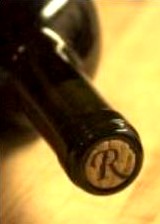 what
would become Burgenland. The village of Rust became famous for its sweet white wine, Ruster
Ausbruch. Casks of the
what
would become Burgenland. The village of Rust became famous for its sweet white wine, Ruster
Ausbruch. Casks of the
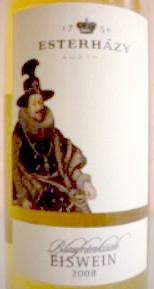 Ausbruch
were trademarked with an “R” as early as 1524 by decree of the Queen of Hungary and as a
designation of protected origin. In 1526, the first Trockenbeerenauslese, made exclusively
from “noble” rotten grapes, was created in Donnerskirchen. Known as “Lutherwein”
(Donnerskirchen was a Protestant enclave during the Reformation), this wine was considered
such a delicacy that the last of the 1526 vintage was not drunk until 1852, 326 years after
its creation! Later Turkish invasions laid waste to Rust and the surrounding areas. In 1681,
Rust earned the status of Imperial Free City based on its wine production (and the payment of
60,000 gulden and 500 pails of Ruster Ausbruch!). During the siege of Vienna in 1683, Prince
Esterházy donated casks of wine from this area to boost the morale of the defenders.
Ausbruch
were trademarked with an “R” as early as 1524 by decree of the Queen of Hungary and as a
designation of protected origin. In 1526, the first Trockenbeerenauslese, made exclusively
from “noble” rotten grapes, was created in Donnerskirchen. Known as “Lutherwein”
(Donnerskirchen was a Protestant enclave during the Reformation), this wine was considered
such a delicacy that the last of the 1526 vintage was not drunk until 1852, 326 years after
its creation! Later Turkish invasions laid waste to Rust and the surrounding areas. In 1681,
Rust earned the status of Imperial Free City based on its wine production (and the payment of
60,000 gulden and 500 pails of Ruster Ausbruch!). During the siege of Vienna in 1683, Prince
Esterházy donated casks of wine from this area to boost the morale of the defenders.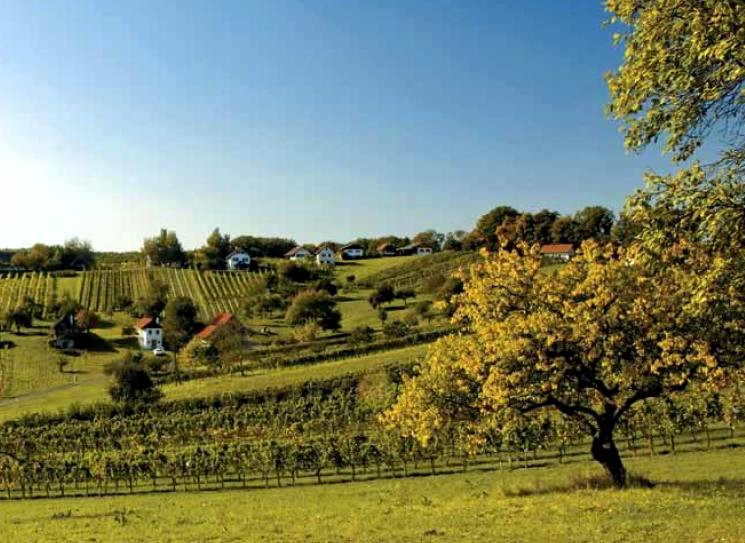
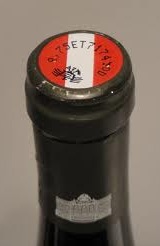 Wein
- Table wine, the least expensive, “marketed and sold without protection or geographic
origin,” may be blended with other EU wines. Cannot carry the red and white “banderole” on the
bottle.
Wein
- Table wine, the least expensive, “marketed and sold without protection or geographic
origin,” may be blended with other EU wines. Cannot carry the red and white “banderole” on the
bottle.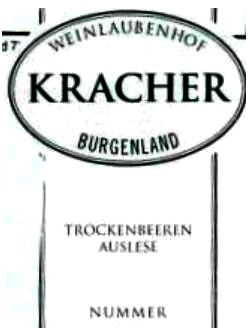 carefully selected and appropriate grapes
carefully selected and appropriate grapes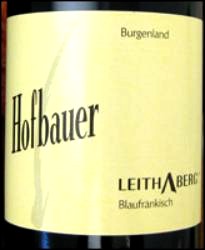 Leithaberg
DAC (Neusiedlersee-Hügelland): Includes the western shore of the Neusiedlersee to the
Leitha mountain range. A great diversity of wine production is found here, home to the famous
Ruster Ausbruch. Dry wines are also produced, using Pinot Blanc, Chardonnay, Grüner Veltliner,
Neuberger (white) and Blaufränkisch, St. Laurent, Pinot Noir, Zweigelt (red) grapes. Has
become a “real wine mecca for tourists” visiting Eisenstadt, Rust and Mörbisch.
Leithaberg
DAC (Neusiedlersee-Hügelland): Includes the western shore of the Neusiedlersee to the
Leitha mountain range. A great diversity of wine production is found here, home to the famous
Ruster Ausbruch. Dry wines are also produced, using Pinot Blanc, Chardonnay, Grüner Veltliner,
Neuberger (white) and Blaufränkisch, St. Laurent, Pinot Noir, Zweigelt (red) grapes. Has
become a “real wine mecca for tourists” visiting Eisenstadt, Rust and Mörbisch.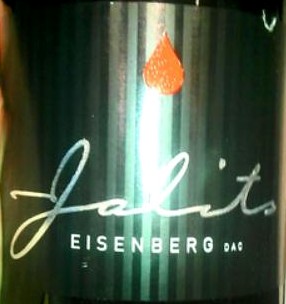 Eisenburg
DAC (Südburgenland): “Probably the most unspoilt wine landscape of Burgenland.”
Blaufränkisch dominates the red wine production. Many vintners in South Burgenland are “hobby
winemakers” who supplement their day jobs with wine sales through local wine taverns.
Eisenburg
DAC (Südburgenland): “Probably the most unspoilt wine landscape of Burgenland.”
Blaufränkisch dominates the red wine production. Many vintners in South Burgenland are “hobby
winemakers” who supplement their day jobs with wine sales through local wine taverns.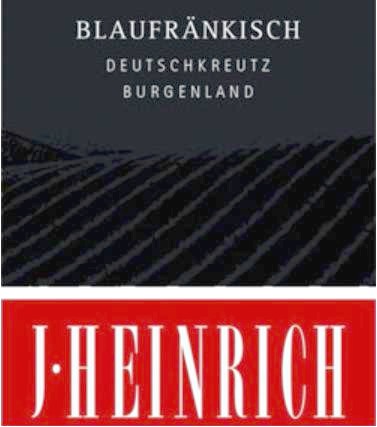 Blaufränkisch
- As the name indicates, of possible Frankish origin, from the time of Charlemagne. Best wines
made in middle to southern Burgenland, known as “Blaufränkischland.”
Blaufränkisch
- As the name indicates, of possible Frankish origin, from the time of Charlemagne. Best wines
made in middle to southern Burgenland, known as “Blaufränkischland.”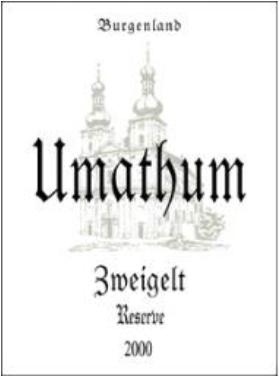 Zweigelt
or Blauer Zweigelt - A cross between St. Laurent and Blaufränkisch and named
after its creator, Franz Zweigelt, this is a purely Austrian grape. It has good resistance to
disease and temperature extremes and grows practically anywhere with good yields.
Zweigelt
or Blauer Zweigelt - A cross between St. Laurent and Blaufränkisch and named
after its creator, Franz Zweigelt, this is a purely Austrian grape. It has good resistance to
disease and temperature extremes and grows practically anywhere with good yields.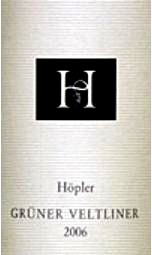 Grüner
Veltliner - The most common Austrian grape, “extremely versatile as well as
reliable,” its “unstoppable conquest of more than a third of all Austrian vineyards” began
only after WW-II (Blom, p. 43). Heuriger culture would not exist without this grape, but wines
made from this grape also have great aging potential.
Grüner
Veltliner - The most common Austrian grape, “extremely versatile as well as
reliable,” its “unstoppable conquest of more than a third of all Austrian vineyards” began
only after WW-II (Blom, p. 43). Heuriger culture would not exist without this grape, but wines
made from this grape also have great aging potential.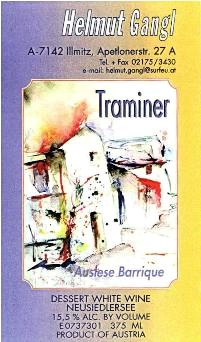 Scheurebe
- Found mostly around Illmitz for the production of nobly sweet wines.
Scheurebe
- Found mostly around Illmitz for the production of nobly sweet wines.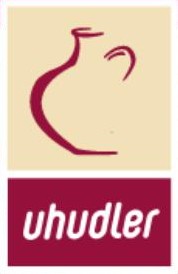 Uhudler
- Being a special wine which must only be served in Southern Burgenland and the bordering
Styrian area, you will not find it anywhere else. It is drunk cold, and though its appearance
has some resemblance with rosé, it tastes entirely different. It has the smack of berries,
after the uncultivated grapes from which it is made. This wine is supposed to be drunk
together with friends, on a warm autumn evening, in the open air, having a nice talk and laugh
at a candle-lit table. Most Buschenschanks will provide you with those prerequisites; you
still need to bring the friends, though.
Uhudler
- Being a special wine which must only be served in Southern Burgenland and the bordering
Styrian area, you will not find it anywhere else. It is drunk cold, and though its appearance
has some resemblance with rosé, it tastes entirely different. It has the smack of berries,
after the uncultivated grapes from which it is made. This wine is supposed to be drunk
together with friends, on a warm autumn evening, in the open air, having a nice talk and laugh
at a candle-lit table. Most Buschenschanks will provide you with those prerequisites; you
still need to bring the friends, though.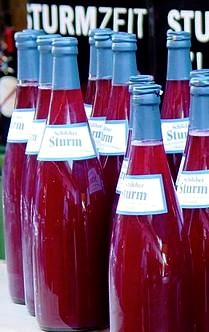 stacked
in the press.
stacked
in the press.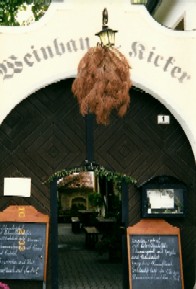 The
Wine Taverns of Austria
The
Wine Taverns of Austria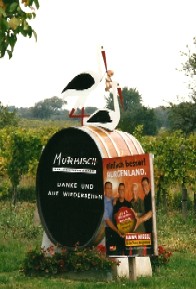 family
history research, but also to enjoy the local culture. We stayed in a pension in the small
village of Oberloisdorf, within easy reach of the home villages of my ancestors as well as the
wine areas of both Neusiedlersee and Mittelburgenland. The local roads were hemmed on each
side with vineyards stretching into the distance. Autumn flowers were still blooming profusely
in the ditches fronting the vines. Little cart-like trucks dashed in and out of the vineyards,
piled to overflowing with freshly picked grapes. The towns of Rust and Mörbisch were bustling
with the harvest and sale of wines, the air filled with the heady aroma of crushed grapes. We
visited Weingut Marienhof in Rust and bought two bottles of “Just Rust” 2000 Ruster
Blaufränkisch.
family
history research, but also to enjoy the local culture. We stayed in a pension in the small
village of Oberloisdorf, within easy reach of the home villages of my ancestors as well as the
wine areas of both Neusiedlersee and Mittelburgenland. The local roads were hemmed on each
side with vineyards stretching into the distance. Autumn flowers were still blooming profusely
in the ditches fronting the vines. Little cart-like trucks dashed in and out of the vineyards,
piled to overflowing with freshly picked grapes. The towns of Rust and Mörbisch were bustling
with the harvest and sale of wines, the air filled with the heady aroma of crushed grapes. We
visited Weingut Marienhof in Rust and bought two bottles of “Just Rust” 2000 Ruster
Blaufränkisch. we
would see little signs tacked up on the menu boards next to the piles of Kürbis and scarecrows
that decorated the Gasthöfe: “Sturm heute,” or simply “Most.” Curious, I ordered some of each.
I found Sturm to be particularly refreshing. Its tart, fizzy and fruity qualities paired very
well with a rustic supper such as Blunz’n Pfandl and Kurbissuppe. Nowhere else did we find
this remarkable beverage, and no one back in the US had any idea of what I was talking about.
Another experience one can only have in Austria!
we
would see little signs tacked up on the menu boards next to the piles of Kürbis and scarecrows
that decorated the Gasthöfe: “Sturm heute,” or simply “Most.” Curious, I ordered some of each.
I found Sturm to be particularly refreshing. Its tart, fizzy and fruity qualities paired very
well with a rustic supper such as Blunz’n Pfandl and Kurbissuppe. Nowhere else did we find
this remarkable beverage, and no one back in the US had any idea of what I was talking about.
Another experience one can only have in Austria!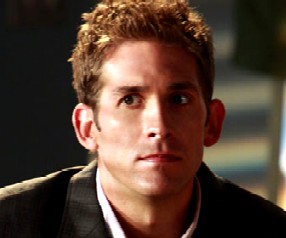 In
the episode, criminalist Greg Sanders is having some difficulty locating a man who is not in
any police database. To get past this roadblock, he decides to enlist the help of Donna. She
takes him on a ride searching card files and county documents in the pursuit of a missing
murder suspect. During the process, we get introduced to a dedicated and able genealogist who
quickly gets to the bottom of the mystery by doing what trained genealogists do best;
establishing a line of descent that, in this case, leads to a killer. As a by-product, she
also ends up getting Greg hooked on his own genealogy. We also discover that some family
members aren’t quite so excited about finding long lost relatives, and that some family
secrets should never be revealed.
In
the episode, criminalist Greg Sanders is having some difficulty locating a man who is not in
any police database. To get past this roadblock, he decides to enlist the help of Donna. She
takes him on a ride searching card files and county documents in the pursuit of a missing
murder suspect. During the process, we get introduced to a dedicated and able genealogist who
quickly gets to the bottom of the mystery by doing what trained genealogists do best;
establishing a line of descent that, in this case, leads to a killer. As a by-product, she
also ends up getting Greg hooked on his own genealogy. We also discover that some family
members aren’t quite so excited about finding long lost relatives, and that some family
secrets should never be revealed. "Half
a billion euros! Now, that's something we should talk about. After eleven successful years,
2006 saw the end of Objective-1 financial aid in the Burgenland. And what now? The period for
the phasing out of financial aid started in 2007. Over the period up to 2013 grants totaling €
446 million have been earmarked for the Burgenland. Now that’s worth talking about! Come to
us, and we will provide you with an unparalleled grant service. After all, we are not simply
financial advisers, we are also an agency for grants."
"Half
a billion euros! Now, that's something we should talk about. After eleven successful years,
2006 saw the end of Objective-1 financial aid in the Burgenland. And what now? The period for
the phasing out of financial aid started in 2007. Over the period up to 2013 grants totaling €
446 million have been earmarked for the Burgenland. Now that’s worth talking about! Come to
us, and we will provide you with an unparalleled grant service. After all, we are not simply
financial advisers, we are also an agency for grants."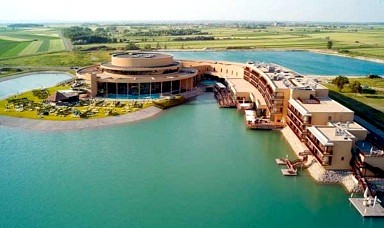 happen,
noting that WiBAG does not simply support Austrian and foreign companies in business
resettlement, but is also active on its own account. WiBAG has been committed to upgrading of
tourist infrastructure, giving examples such as the recent development of the Golf- und
Thermenresort Stegersbach golf and spa resort, the GesundheitsZentrum Bad Sauerbrunn health
resort, and the Sonnentherme Lutzmannsburg-Frankenau sun spa. The first two spas have already
been privatized, since WiBAG's commitment and ownership is purposely restricted. In its
current program-planning period, WiBAG is funding the expansion of existing tourist
destinations. Its only new spa project was the construction of the St. Martins Seewinkeltherme
in the Frauenkirchen area, which started operation in the winter of 2009.
happen,
noting that WiBAG does not simply support Austrian and foreign companies in business
resettlement, but is also active on its own account. WiBAG has been committed to upgrading of
tourist infrastructure, giving examples such as the recent development of the Golf- und
Thermenresort Stegersbach golf and spa resort, the GesundheitsZentrum Bad Sauerbrunn health
resort, and the Sonnentherme Lutzmannsburg-Frankenau sun spa. The first two spas have already
been privatized, since WiBAG's commitment and ownership is purposely restricted. In its
current program-planning period, WiBAG is funding the expansion of existing tourist
destinations. Its only new spa project was the construction of the St. Martins Seewinkeltherme
in the Frauenkirchen area, which started operation in the winter of 2009.